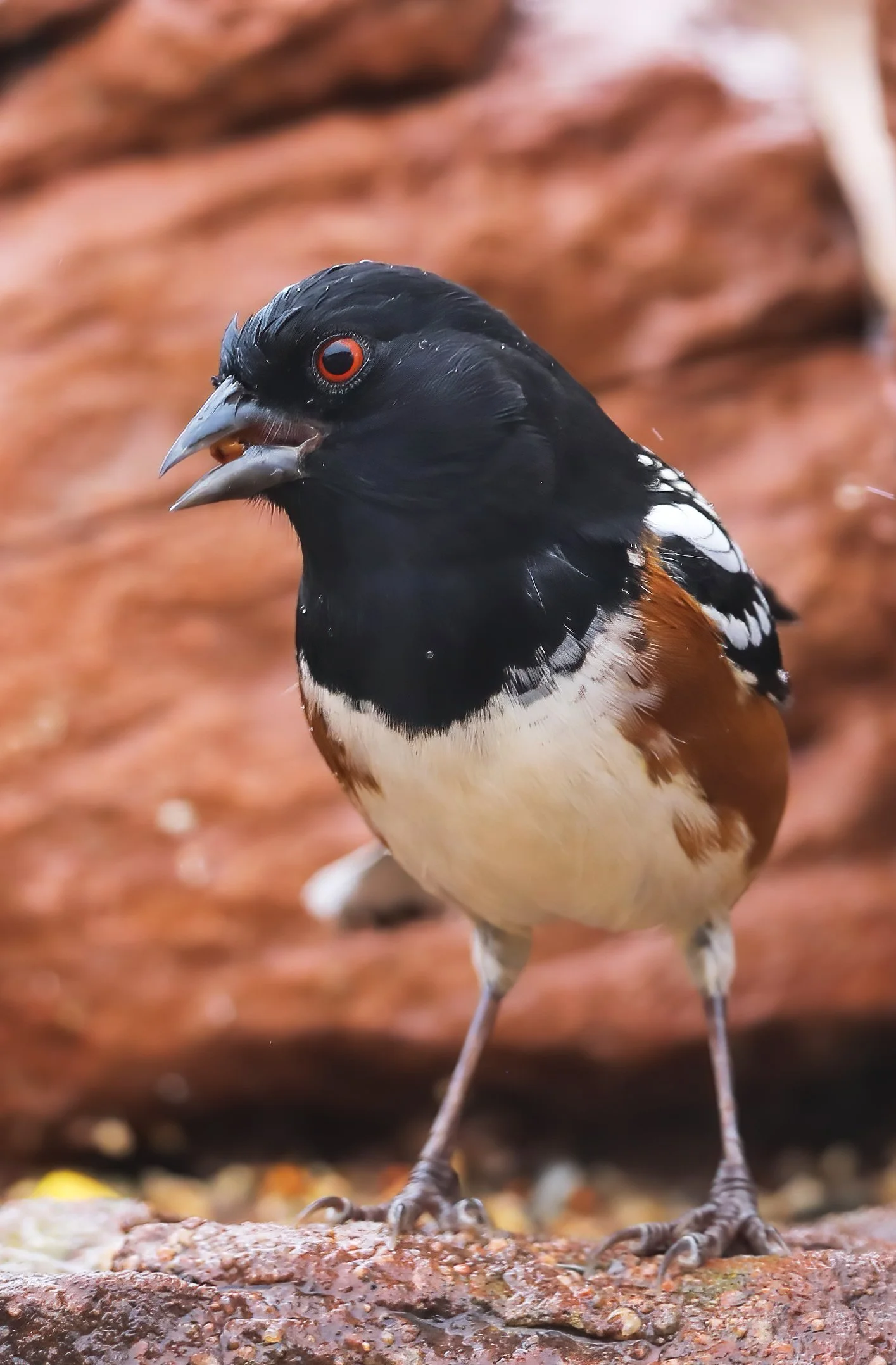and another spectacular winter day on tap, I took advantage of the continued mild weather and headed out to Moab Brands for a terrific afternoon bike ride. Few others are out and the trails are in perfect condition. Here’s a self portrait.
The first full day of winter...
in Castle Valley National Park was absolutely spectacular and quite a few people in the community were out walking the trails.
Click on image to embiggenate.
Sunset on the solstice...
is the colorful highlight at the end of the shortest day of the year, though sunrise won’t occur earlier in the morning until 2 January 2025. Still 12 days away.
The new off ramp to Interstate 70...
is coming along nicely in Castle Valley at Placer Creek. What folly.
Any one of these lower cost and more environmentally friendly low-water crossing designs would have worked just fine at this small and usually dry stream crossing: Chapter 5 - Low-Water Crossing Types.
A mild autumn season...
comes to a close in three days on the winter solstice and the extended forecast is for continued dry conditions with moderate temperatures. The Old Farmer’s Almanac is predicting that “precipitation and snowfall will be average or above average throughout the Intermountain Region. The snowiest periods will fall in mid-November, early and late January, and mid-March.” We shall see.
Another vibrant sunrise this morning above the La Sal Mountains. It’s good to be a morning person.
The snow water equivalent in the snowpack has flatlined since late-November, now just 121% of median.
A window into the Honaker Trail Formation...
can be found below Deadman’s Curve on the old highway grade west of Arches National Park. This Upper Pennsylvanian-age (~300 Ma) carbonate unit crops out as a cliff former in very few places in the Moab area, seen in the image below as the grayer strata beneath the paved bike trail across the canyon, captured from a high vantage point on the Rusty Spur mountain bike trail.
Jupiter precedes the rising Full Cold Moon...
that strongly silhouettes the Priest and the Nuns on the eastern skyline tonight.
Jupiter is the bright object above and to the right of Castleton Tower. Other bright stars in constellations Auriga and Taurus are also seen in this twilight image.
My personal best was achieved today...
where the Arreaux model rocket soared to an apogee of 2,402 feet (732 meters) on a “G” engine at a remote launch site on the state line. I’m aiming higher.
Also, these launches push me over the century mark, now having sent more than 100 model rockets skyward this year. Huge fun.
The Book Cliffs serve as a backdrop as the Arreaux zooms off the pad.
The Nike Smoke Pro under chute after achieving an apogee of 695 feet (212 meters).
Pronghorn (Antilocapra americana) wondering what all the commotion was about out on the range this morning.
A view into Arches National Park...
from the Moab Brands mountain bike trail system. That’s South Window Arch in The Windows Section of the park, about seven miles (11 km) distant. It was an absolutely magnificent afternoon for a ride.
Fifty-two years ago today...
man last walked on the Moon in Taurus-Littrow valley. Here’s tonight’s waxing gibbous Moon, three days from full, with the Apollo 17 landing site indicated by the orange x where astronauts Gene Cernan and Harrison Schmitt (a geologist) performed three days of exploration in 1972.
Taurus–Littrow valley is located on the southeastern edge of Mare Serenitatis, the landing site of Apollo 17, indicated by the tiny orange x.
Neither deterred by snow flurries...
nor by my active presence on the back deck, Sharpie is becoming a dependable daily visitor to the feeding stations. Good hunting.
Sharp-shinned Hawk (Accipiter striatus).
Icy crystals of hoarfrost...
develop and are sustained in deeply shaded areas, seen here nucleating on blades of grass. It’s a frigid microscopic crystalline wonderland.
Click on image to enlarginate.
The Culebra Cut of Castle Valley...
is being excavated at the Placer Creek dry stream crossing. Methinks this is a grossly overengineered and expensive solution to an erosion problem that no longer exists, but that’s just 40+ years of experience as a fluvial geomorphologist talking.
Meanwhile, elsewhere in the community, the drainage ditches that are choked with sediment from summer flooding go largely unattended. Pure negligence.
Having enormous patience...
for the right opportunity and fast off the mark, this tiny hawk is quite tolerant of my presence nearby while it hunts around the house for unsuspecting prey. One of these days I’ll capture the actual strike on its target.
Sharp-shinned Hawk (Accipiter striatus).
Click on image to embiggen.
Luna and Venus...
setting above Porcupine Rim this evening. Seventeen days to go until the winter solstice.
Adding a bit more insulation...
to the winter nest as nighttime temperatures fall below freezing.
Female House Sparrow (Passer domesticus).
Meanwhile, another flashy little sparrow works the feeding station.
Dark-eyed Junco (Junco hyemalis).
Standing at the vanguard...
of our bucolic high desert community, Smokey the Bear wishes everyone a happy Thanksgiving and a safe holiday season. We are all very grateful and sleep better at night knowing that Smokey is tirelessly on the job.
In constant orbit around the house...
while patrolling the various feeding stations, this bird of prey knows where the Horn of Plenty occurs in Castle Valley.
Sharp-shinned Hawk (Accipiter striatus).
An outstanding early start...
to the water year in the high country thanks to a pre-Thanksgiving winter storm that dropped 1.5 inches (38 mm) of rain on Castle Valley yesterday.
SNOTEL time series showing this year’s snowpack (black line). Green line represents the median and the orange line is the previous water year for comparison.
Link to NRCS Snotel network.
Seemingly constantly hungover...
with its bloodshot red eyes, this large, striking sparrow is one of my favorites at the feeding station.
Spotted Towhee (Pipilo maculatus).




























